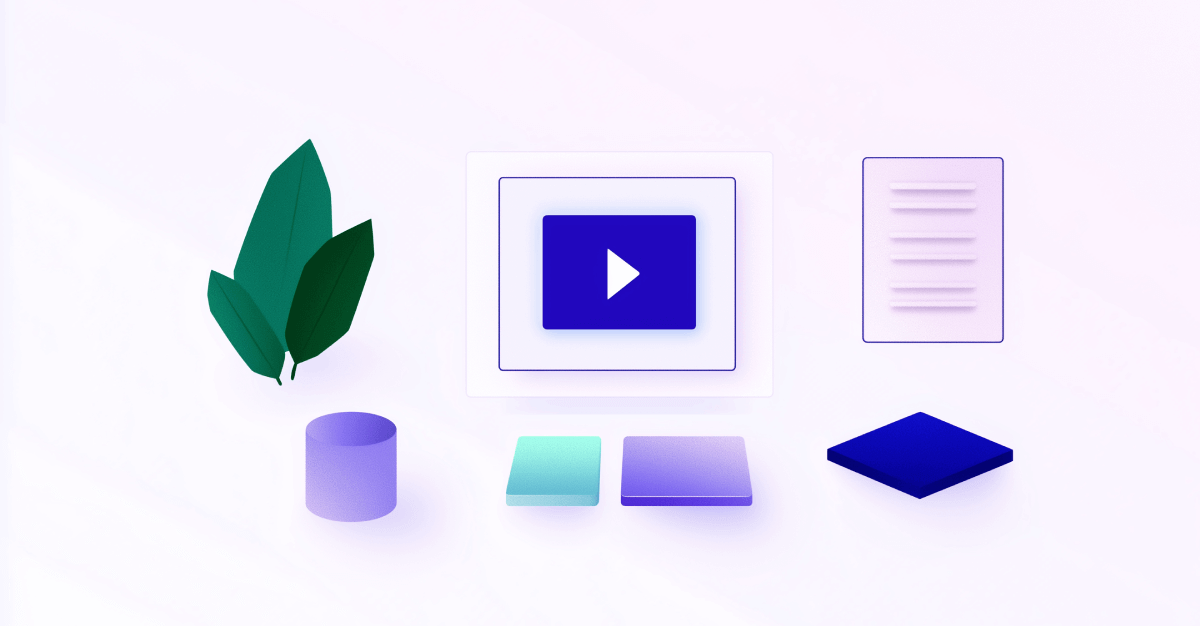
Rankings decreased after a Google update? Have you suddenly lost traffic and you suspect Google Penguin has filtered your website from the search results?
I know how you feel, because I’ve been in the same situation as you are now. But, don’t get discouraged, there’s still hope you can recover your rankings and traffic.
I’m going to share with you my whole story and walk you through how I managed to recover my website from a Google Penguin penalty.
This post is going to be a step by step guide, and if you follow my strategy, you can recover all your rankings and traffic as well. Any Google Penguin penalty can be defeated using the right techniques.
What Exactly is Google Penguin?
Along with Google Panda, Google Penguin is the most common penalty that affects websites that are involved in aggressive link building strategies.
This algorithm penalizes websites that are attempting to manipulate Google’s search results by building low-quality backlinks and over optimizing anchor texts.
When Google detects unnatural links to your website, it will penalize you for the group of keywords you were targeting. The result is less traffic from Google and for online businesses that rely on this traffic, this can mean bankruptcy.
How Do You Know if You’ve Been Penalized by Google Penguin?
The easiest way to detect such a penalty is to check when Google has released an update for Google Penguin. Since 2012, several Google Penguin updates have been announced. These are as follow:
- Penguin 1.0 - April 24, 2012
- Penguin 1.1 - May 25, 2012
- Penguin 2.0 - October 5, 2012
- Penguin 2.1 - October 4, 2013
- Penguin 3.0 - October 17, 2014
If you lost traffic right after these updates occurred, most likely your website was filtered by the algorithm change.
To be 100% sure this is the case, you’ll also have to look at low-quality backlinks and your website’s anchor text distribution. If your backlinks are unnatural and most of your links are of low quality, most likely you were penalized by Google Penguin
How I Knew I was Penalized by Google Penguin
My website was getting a decent amount of traffic when out of a sudden, when Google announced Penguin 2.1, on October 4, 2013, my traffic dropped considerably.

Just like most website owners, when I’ve seen the traffic loss, I immediately went into a denial stage, thinking this is something temporary, and everything will get back to normal in a few days.
Of course things didn’t go as I hoped they would and my denial stage quickly turned into anger and then depression. I felt like this:
It was hard for me to understand why my website was penalized considering it only had high-quality backlinks, at least that’s what I thought at that time.
My website had links from well known trusted sources like HuffingtonPost, NBCNews, Forbes and more. Nevertheless, I had to accept that Google Penguin thought different, and I had to find a way to get my traffic back.
Why I was Penalized by Google
.png)
The answer is simple. Penguin hit my website, because of me. I didn’t pay attention to all my website’s backlinks.
I only cared about the backlinks I was building, which I knew they were of high quality, instead of monitoring every backlink my website gets. I never thought that the backlinks others were creating for my website, will eventually hurt my rankings.
As I said at the beginning of this article, Google Penguin is all about low-quality backlinks and anchor text distribution. Matt Cutts and John Mueller often recommend webmasters to remove bad links, before submitting a disavow report. And so I did.
How I Determined the Links That Caused my Penalty
To analyze and determine my lowest quality links, I registered an account with SEOptimer. I paid attention especially to the links coming from dodgy websites.
The plan was simple; I had to remove the low-quality backlinks, change my anchor texts where possible and disavow all the other backlinks I couldn’t remove. I had to make my backlinks profile look natural.
First I toggled to the Backlinks tab to get a detailed view of the backlinks pointing to my profile. Usually, a very large number of external links is a clear signal of a low-quality website.
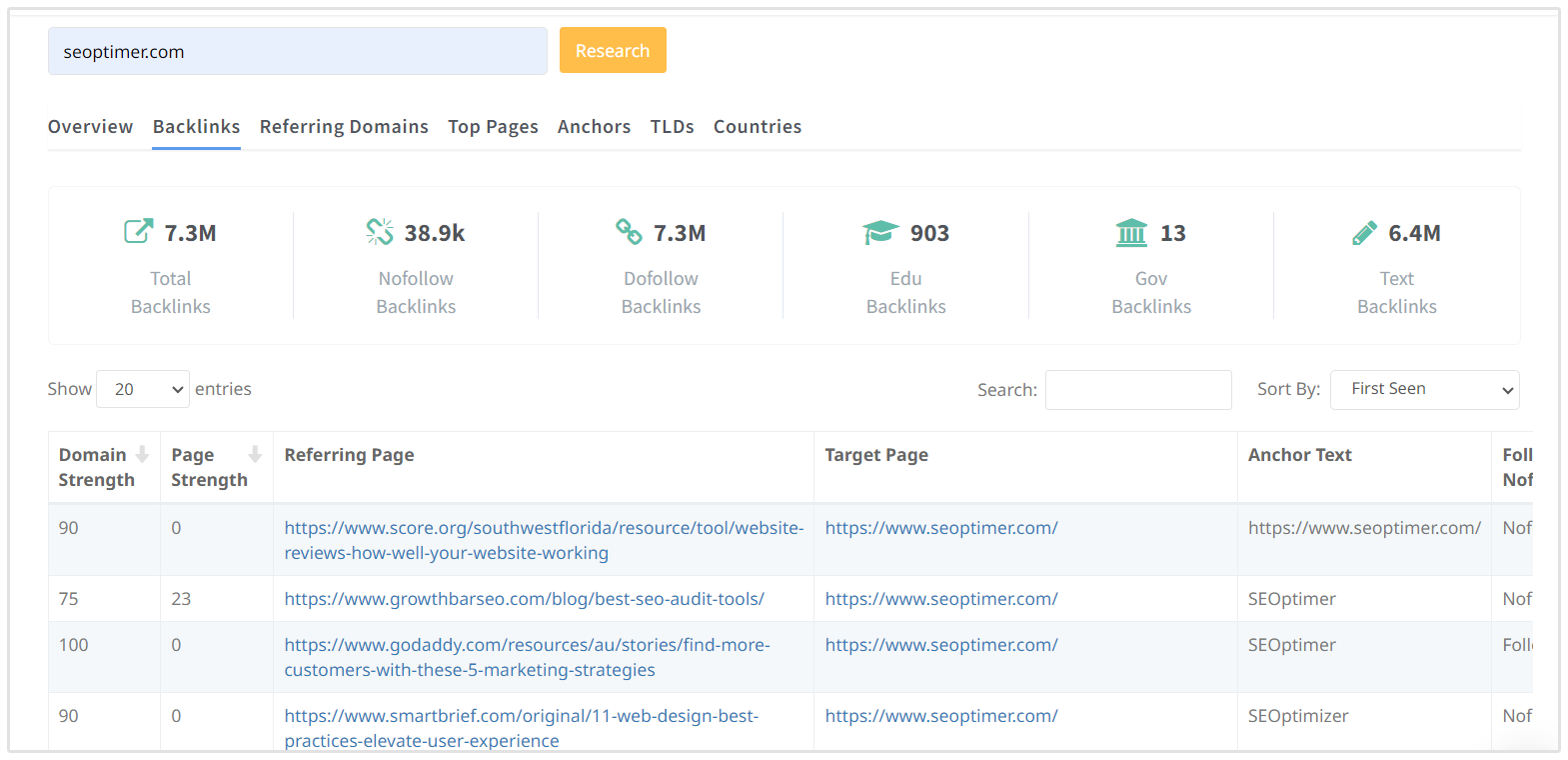
However, do consider that this is not always a rule, and you should manually check each backlink before trying to remove them.
The second thing I’ve done to find the links causing my Google Penguin penalty, was to go to the anchor text column and find all the links abusing specific anchor texts.
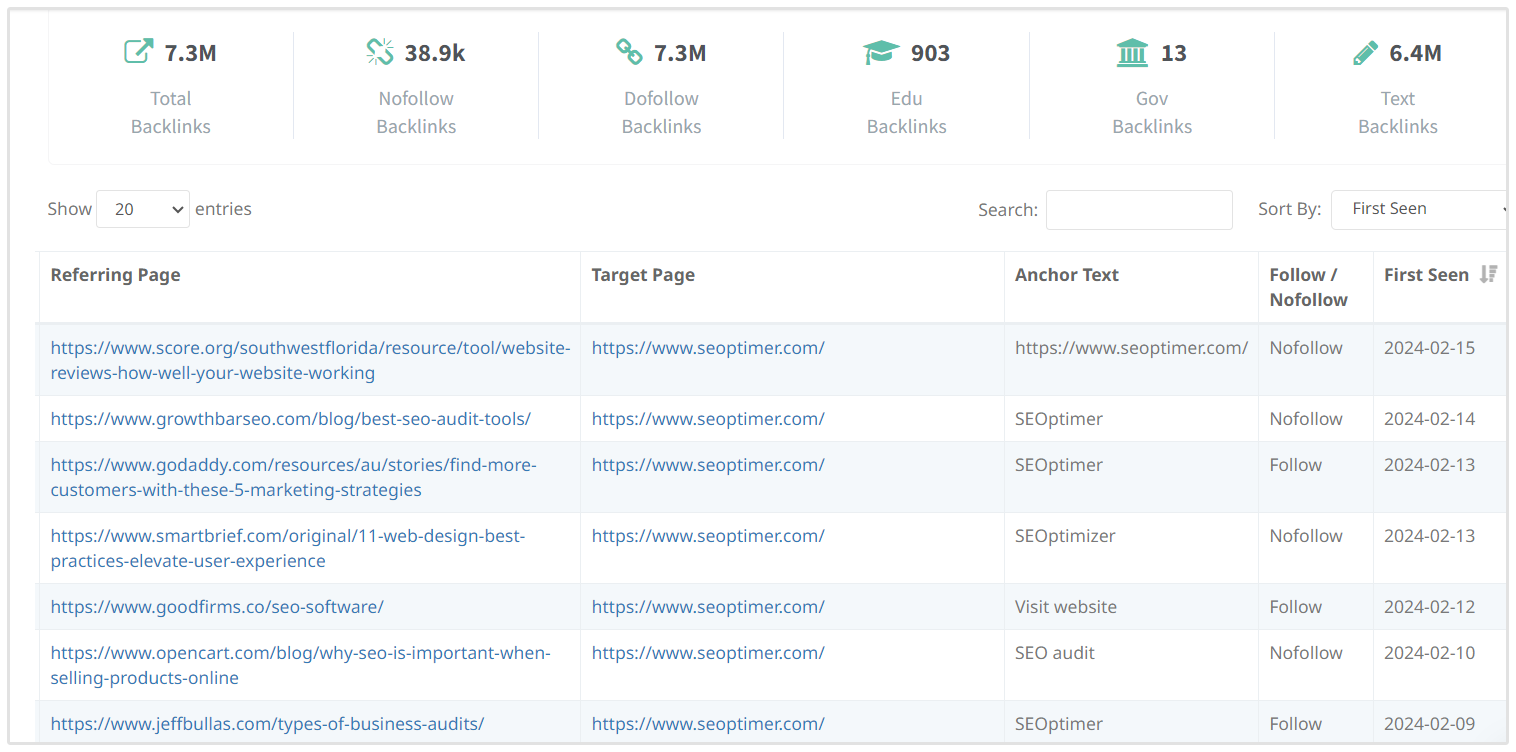
I noticed four keywords were used more than 50% of the time, making everything look unnatural. And to make things even worse, they were not brand keywords, as they should have been.
That was like I was raising a flag to Google and telling them that I’m doing something wrong. Yes, most of my links were coming from very reputable websites, but they were over optimizing my main keywords, and made everything look unnatural.
Again I checked all of these links one by one and I tagged the ones I believed I must remove.
Because they were so many and some of them were actually very good links from websites I’ve contributed with guest articles, I decided to email the content managers and ask them if it’s possible to change my anchor text for my links.
I already had their contact details and to my surprise, most of them were willing to help me with this.
Next, I analyzed the Domain Strenth and Referring Pages of the backlinks. Backlinks from very low DS sites or sites with a strange looking domain name were placed on my list of links to Disavow.
How I Removed the Low Quality Backlinks
Once tagged all the links I needed to remove, I had to contact webmasters and ask for a link removal. Keep in mind that this process is very time-consuming and the removal rate can sometimes be discouraging.
Here are some tips to consider when sending link removal requests:
- Always use your business email address, instead of a gmail or yahoo address. That helps you gain trust, by proving the webmaster you work or own that website.
- Be polite and friendly. Threatening the person you want a favor from will not help at all.
- Make it easy for them to find and change your link. Give them the exact location of where their website is linking to you.
- Keep it short.
Considering all the above, here’s an example of a link removal request:
Hi [name],
My name is [name] and I work for [Website.com]. I am reaching out to you in hopes you can do me a favor. I noticed your website links to our website on this page: [link] . May I kindly ask if you could please remove this link? The link is located at the bottom of the article, using the anchor text [your anchor text].
Thank you for your time, and I wish you all the best.
Regards,
[name]And here’s another example of a correct link removal request I received a while ago.
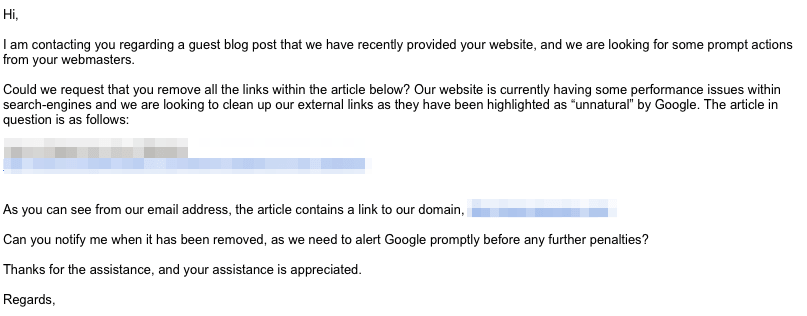
My removal request rate was close to 10%. For the websites I haven’t received a reply, I tried to contact the company hosting their website and ask for a link removal.
This helped me raise my removal rate close to 20%, which is very good. To find their hosting companies, I used Whois.
Disavowing the Links I Couldn’t Remove
Once I removed most of the links and changed some of the anchor texts, I submitted a disavow report to Google Disavow tool. In this report, I included all the links I couldn’t remove and also the ones I managed to delete.
That’s because those websites were of very low-quality, and I didn’t want Google to associate my website with them by any means, even though they were removed already.
Removed, Changed Anchor Texts, Disavowed, What Else?
After I had removed most of the bad links, disavowed what I couldn’t and also diluted the anchor text distribution, I had to wait for another Google Penguin update.
As silly as that may sound; unfortunately there’s not much you can do if you’ve been penalized by a Google Penguin update. At least that’s according to what John Mueller says, Webmaster Trends analyst at Google.
Here’s a screenshot from a conversation he had on Google’s forum, where a user asks if there is any way to recover from a Google Penguin update, without another Penguin update.
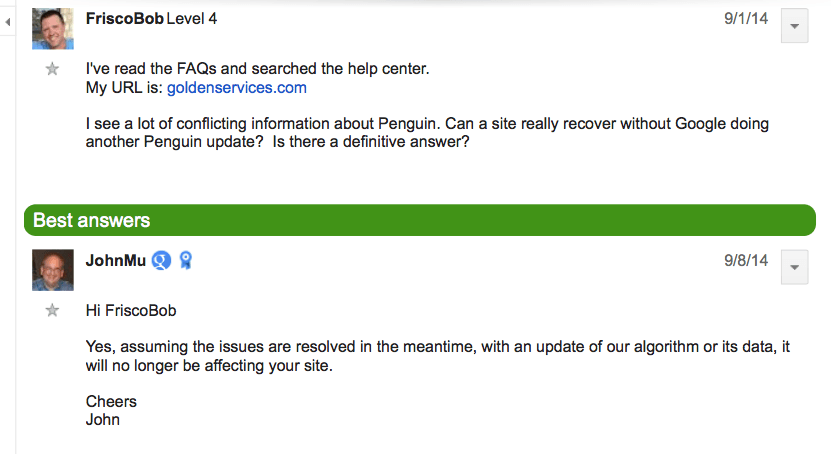
Judging by what happened in my case, I can pretty much confirm what John said. My website has recovered it’s rankings right after Penguin 3.0 has been announced, on October 17, 2014.

My rankings and traffic are now back to where they used to be before the update. Now I can concentrate on growth instead of recovery.
Conclusion
Recovering from a Google Penguin penalty is possible. I managed to recover my website by diluting the anchor texts and removing all the low-quality backlinks.
Use the SEOptimer SEO tool to easily identify the links you have to remove and those you need to keep.
What’s your story? Have you ever been penalized by Google? I would love to hear from you.




